Archived Mold Remediation Blog Posts
Using Containment to Reduce Mold Damage in Southern McHenry County
11/2/2023 (Permalink)
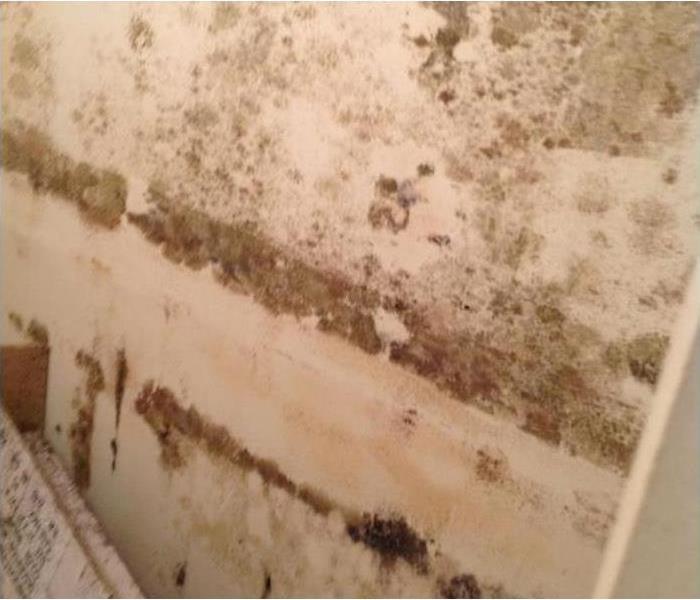 Our SERVPRO technicians can remediate mold damage with advanced equipment and IICRC-Certified training in Southern McHenry County.
Our SERVPRO technicians can remediate mold damage with advanced equipment and IICRC-Certified training in Southern McHenry County.
SERVPRO Mold Remediation Teams Can Cleanup Infestation
A mold is a form of fungi that grows in humid environments and indoor spaces. Sometimes, this microbial organism may develop in the rooms or structure of your home. Getting rid of infestation usually requires the assistance of professional remediators that have the know-how and expertise to strike at the source of the issue.
SERVPRO has mold damage remediation technicians in Southern McHenry County. We have decades of experience helping residents and local business owners overcome potential microbial growth issues in their properties. Microbes rely on spores to reproduce, found in almost all environments on earth, including your home. Spores are a relatively benign feature that only becomes a problem when combined with moisture which allows them to grow and reproduce. Correcting a microbial infestation relies on discovering the source of the problem, which is usually a moisture issue. Our technicians are well-versed in the problems that cause moisture issues in a home environment. These are commonly due to structural exposure, for example, faulty roofing, insufficient insulation that leads to condensation issues, or leaking pipes. Using our training, we can rectify the source of the problem to prevent further infestation.
Once the source of the problem is under control, our technicians can begin to reverse the damage. Depending on the scope of damages, the removal of infestation may involve chemical action, controlled demolition, or abrasive cleaning. A prime candidate for chemical action is when a microbial infestation visibly affects a surface, but the surface remains dry. A dry, moldy surface usually indicates that there was a one-time spillage or leak that allowed fungi to grow but has since dried. Technicians can apply a biocide or antimicrobial chemical directly onto the surface. After a few days, the chemical destroys the infestation, and any residual elements can be cleaned easily using detergents or other rinsing agents.
Practices for Removing Microbial Growth
- Chemical agents that destroy microbes include biocides like anti-microbial sprays like sanitizer.
- Controlled demolition involves removing an infested material such as drywall which is then replaced once an infestation is removed.
- Abrasive action can involve corrosive chemical agents or abrasion tools such as sand and soda blasting machines. These remove the surface layers of the material itself along with the infestation.
Our IICRC MRS-Certified remediation technicians can help identify and destroy mold damaged infested materials in your home. By carefully establishing containment protocols, we can not only remove the existing infestation but decrease the likelihood of it spreading to unaffected areas. A containment protocol is a system of checks and balances that prevents spores from spreading during remediation or removal of moldy materials. Spores are microscopic, which makes them easy to inadvertently spread on items of clothing, airways, or air conditioning systems.
Setting up effective containment begins with the application of common-sense practices. Communicating areas of infestation and reducing foot traffic in those areas are an example of common sense containment practices. More advanced containment procedures can involve using physical barriers and sealing areas with non-porous sheeting. Furthermore, our technicians can take extra care to avoid spreading spores by removing hazmat suits when entering or exiting the affected spaces.
Containment and Removal of Microbial Infestation
- When demolishing mold damaged materials, it is vital to pack debris into double-sealed bags for disposal at the appropriate waste disposal facility.
- Negative air pressure machines can be used during demolition to capture airborne spores from the surrounding air.
- Replacing older filters on venting ducts and fans or temporarily sealing them can prevent the spread of spores through air conditioning systems.
Remediation can help you get rid of the infestation for good. Contact SERVPRO of Southern McHenry County for mold damage remediation at (847) 516-1600.
Mold Removal or Remediation?
7/21/2021 (Permalink)
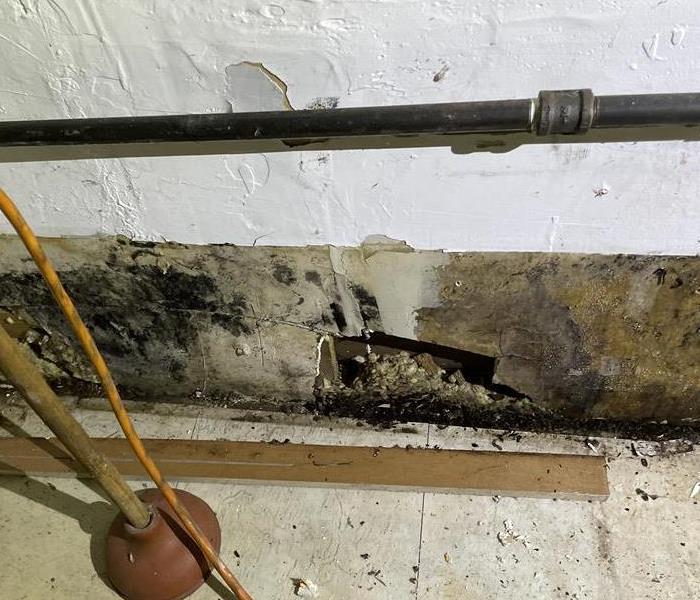 Call SERVPRO of Southern McHenry County today!
Call SERVPRO of Southern McHenry County today!
Since microscopic mold spores exist naturally almost everywhere, indoors and outdoors, removing all mold from a home or business is impossible. Some restoration businesses advertise “mold removal” and even guarantee to remove all mold. This is a fallacy.
A qualified restoration company understands the science behind mold and mold growth. SERVPRO Professionals have the training and expertise to remediate the mold in your home or business. Mold remediation focuses on getting mold levels back to normal, natural levels.
Every mold damage scenario is different and requires a unique solution, but the general mold remediation process stays the same.
- Step 1: Call SERVPRO
- Step 2: Have one of our highly trained estimators come out for and inspection and Mold Damage Assessment
- Step 3: Mold Containment
- Step 4: Air Filtration
- Step 5: Removing Mold and Mold-Infested Materials
- Step 6: Cleaning Contents and Belongings
- Step 7: Restoration
Prevent mold growth over summer months
7/19/2020 (Permalink)
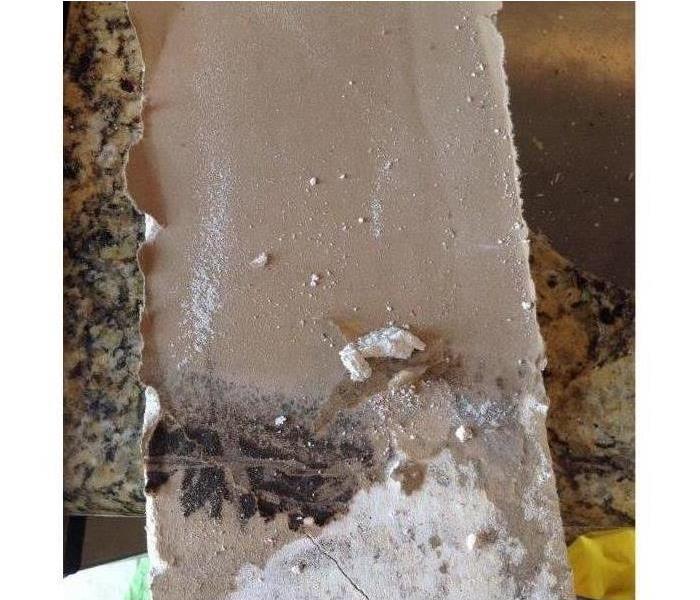 Mold Growth
Mold Growth
We’d like to offer you some summer tips to prevent mold. During the warm months of summer, mold thrives because most strains of mold need warm temperatures in order to grow. Preventing mold takes a little forethought and preventative maintenance, but it’s a lot less work and a lot cheaper than cleaning up a household mold problem later on.
Tips to Prevent Mold in Summer
Some simple things you can do to prevent mold in summer include:
- Use your air conditioner on hot days. Mold grows best at temperatures above 77 degrees Fahrenheit, so keep the indoor temperature lower than that if you can.
- Watch for any condensation or moisture in your air ducts. Sometimes using the air conditioner can cause condensation and that moisture provides a place for mold to grow.
- Purchase a hygrometer, an instrument that measures the relative humidity, so you can monitor the humidity in your home. By monitoring the relative humidity in your home, you can take steps when necessary to reduce moisture in order to prevent the growth of mold.
- Mold thrives in moist environments, so it’s best to keep the relative humidity below 50 percent. If any areas of your home have relative humidity higher than that, purchase a dehumidifier to reduce the amount of moisture in the air. Mold doesn’t grow well in dry environments.
- Close windows when it rains. If windows are open when it rains, dry windowsills, floors or any other surfaces as soon as possible. If carpet gets wet, use a fan to dry it faster.
- If it’s a rainy summer, watch for signs of a leak in your roof. A discolored spot on the ceiling generally means a leak, even if you don’t see water coming through the ceiling. Have any leaks repaired as soon as possible to keep mold from developing.
In addition to the above summer tips to prevent mold, you should do some basic things all year around, including:
- Repair any leaky pipes or appliances as soon as possible.
- Make sure your clothes dryer is vented to the outdoors, not into your attic or crawlspace.
- Turn on the exhaust fan or open a bathroom window a couple inches when showering. The steam that fills the bathroom when you shower provides ample moisture for mold.
- Don’t use carpet in bathrooms. It’s hard to dry out carpet thoroughly. It’s much easier to dry linoleum or tile floors if they get wet. You can use throw rugs in bathrooms, which can be machine washed and hung to dry, which prevents them from getting moldy.
- Clean up any spills of water or other liquids immediately.
- Address any mold problems that do occur promptly to prevent the mold from growing and spreading to other areas of the home.
- If you notice a musty smell in the home, you probably have mold somewhere. Mold often grows in hard-to-see places, like under carpet and inside walls. If you smell something musty but can’t find any mold, we recommended calling in a certified mold tester to test your home for mold. Most certified mold testers are engineers and they are trained to track down hidden mold. They can also tell you what kind of mold is
Mold In Your Cary And Surrounding Area Home
2/27/2020 (Permalink)
 This home in Cary, IL found mold growth in their garage
This home in Cary, IL found mold growth in their garage
From the Ordinary
Fungi and mold naturally occur in our environment. In fact, over 100,000 kinds of fungi have been identified.
Fungi produce some very useful results. Yeast is a type of fungi used in preparing breads, baked goods, and other food products, including some alcoholic beverages. The unique flavor of blue cheese is a result of mold. An edible mushroom is simply a type of fungi, and lifesaving penicillin is product of mold as well!
Even though some forms of mold can add value to our lives, other forms can be harmful. Excessive amounts of mold, different types of mold, and/or exposure to molds may present health concerns for some people.
To The Unhealthy
Intrusion of water into your home or a place of business can result in mold growth. Water intrusions can result from storm damage, plumbing, or equipment failures, long-standing leaks and poor humidity control. When water intrusions are not addressed right away, the resulting damage can present increased risk of harmful mold growth. Some amount of mold spores are normally present in most environments. If the humidity and moisture levels in a water-damaged environment are not promptly returned to normal, mold spores may grow and multiply. Organic materials found inside a building, such as wood, paper, drywall, and insulation provide food sources for mold to flourish. Excessive mold growth can lead to indoor environmental conditions that pose a health threat.
If you suspect mold contamination in your home or business contact SERVPRO of Southern McHenry County today at 847-516-1600.
Mold Remediation Services Available For Home/Commercial Property Owners In McHenry County
1/31/2020 (Permalink)
Are You A Commercial Property Owner Dealing with Mold Damage? SERVPRO is Here to Assist!
Mold remediation for a business like yours, for the majority of restoration companies, is an after thought. They lump services in with those provided for home recovery, when in fact there is a major difference in business preparations and the restoration process itself.
To properly treat your McHenry County area property for mold damage, it may be necessary to work during non-peak hours to limit interruptions to normal business operations. When dealing with mold that affects your motel guests, remaining operating during remediation is imperative. The company you choose needs to understand and have the knowledge to protect employees and customers from exposure.
You want access to someone like SERVPRO with all of the resources, equipment, personnel, and experience necessary to perform at a maximum level. Our technicians take every precaution to restrict access to contaminated areas, keeping you informed after each night, advancing your remediation process as quickly and efficiently as possible.
SERVPRO has an entire section devoted to helping businesses just like yours recover after disaster strikes. With experience in every major type of catastrophic event known to man, we can provide you with the services you need to help keep your motel up and running.
Our containment methods prevent exposure to additional areas, containing shower corner mold when possible to avoid additional growth. We also have access to air movers, scrubbers, infrared moisture detectors, hygrometers, and water extraction equipment necessary to perform any services required to get the job done right.
SERVPRO technicians explain our remediation process entirely, giving you exceptional insight into how mold operates and how everyone that works for you can help prevent these problems from reoccurring. Our staff knows how important your business is and we make every effort to show how much we care during every interaction.
Removing mold from your motel rooms can be easy, or it can be hard. The longer you wait to make a call for help, the more losses you experience. With the right company, your mold remediation services go off without a hitch. They can even help remove odors that develop and completely deodorize the entire space.
Locally Owned Company with National Resources
Contact SERVPRO of Southern McHenry County for full details, or to schedule your initial inspection today. Help is only a phone call away. 847-516-1600
Source EPA.gov
Knowing The Professional Mold Remediation Standards
1/10/2020 (Permalink)
In 2008, the Institute of Inspection, Cleaning and Restoration Certification released its first book on professional mold remediation standards, officially known as the BSR-IICRC S520. The 56-page guide for technicians who face the challenges of correcting fungus contamination as part of their job is currently under revision and an updated version is expected to be released later this year.
The IICRC S520 followed on the heels of the Standard and Reference Guide for Professional Water Damage Restoration S500. First published in 1994, the S500 details procedures for the restoration of structures, systems and contents damaged by water. Although the IICRC S500 also recognized the problem of mold contamination resulting from water damage, the guide does not discuss fungal infestation in depth. Consequently, the IICRC realized there was a need to develop a reference guide designed to accompany remediators in the field, and the idea of the IICRC S520 was born.
After three years of gathering the input and applicable knowledge of industry professionals, health experts and trade associations (among the many voices that contributed to the project), the Standard for Professional Mold Remediation S520 was ready for publication. The IICRC S520 in its original form remains accurate in content, IICRC officials say, but constant advancements in technology and new research discoveries make the S520 a living project subject to ongoing changes.
Some of the topics covered in the IICRC guide to professional mold remediation standards include principles of mold remediation; equipment, tools and materials required for the job; building and material science; safety and health; administrative procedures, documentation and risk management, and limitations, complexities, complications and conflicts.
A draft of the S520 is currently open for informal peer review and comments and can be accessed through the IICRC website.
Source: IICRC.org
From The Ordinary To The Unhealthy: Mold In a Village Hall
10/29/2019 (Permalink)
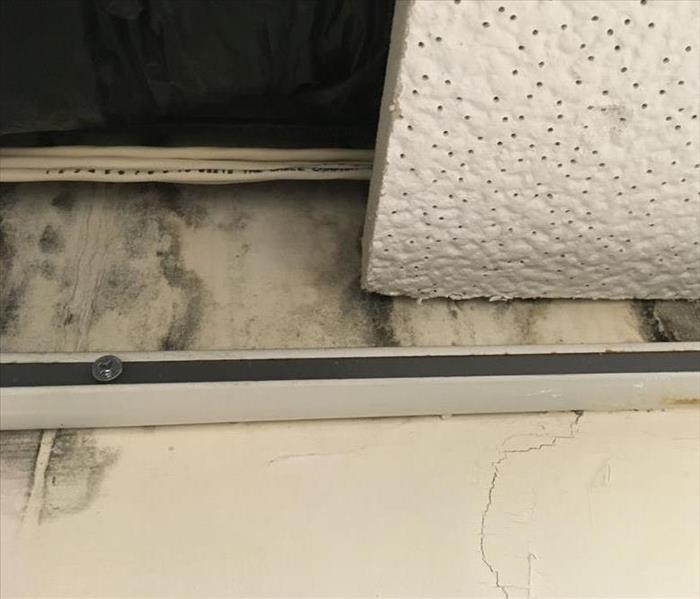 Mold in the Ceiling Of a Village Police Department
Mold in the Ceiling Of a Village Police Department
From the Ordinary
Fungi and mold naturally occur in our environment. In fact, over 100,000 kinds of fungi have been identified.
Fungi produce some very useful results. Yeast is a type of fungi used in preparing breads, baked goods, and other food products, including some alcoholic beverages. The unique flavor of blue cheese is a result of mold. An edible mushroom is simply a type of fungi, and lifesaving penicillin is product of mold as well!
Even though some forms of mold can add value to our lives, other forms can be harmful. Excessive amounts of mold, different types of mold, and/or exposure to molds may present health concerns for some people.
To The Unhealthy
Intrusion of water into your home or a place of business can result in mold growth. Water intrusions can result from storm damage, plumbing, or equipment failures, long-standing leaks and poor humidity control. When water intrusions are not addressed right away, the resulting damage can present increased risk of harmful mold growth. Some amount of mold spores are normally present in most environments. If the humidity and moisture levels in a water-damaged environment are not promptly returned to normal, mold spores may grow and multiply. Organic materials found inside a building, such as wood, paper, drywall, and insulation provide food sources for mold to flourish. Excessive mold growth can lead to indoor environmental conditions that pose a health threat.
If you suspect mold contamination in your home or business contact SERVPRO of Southern McHenry County today at 847-516-1600.
Full-Service Solutions To Mold Damage Found In Your Southern McHenry County Area Home
9/29/2019 (Permalink)
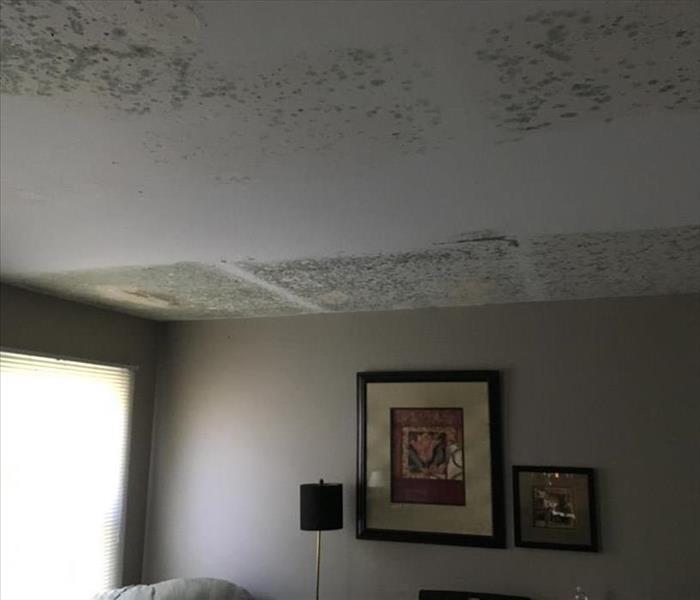 Mold on ceiling caused by water damage not being remediated for 13 days.
Mold on ceiling caused by water damage not being remediated for 13 days.
Remediation Is More Complicated Than Wiping Up a Mold Stain
Mold reproduces by devouring organic materials used to construct your home. They prefer dark, damp, humid areas and create small, lightweight seeds, called spores. These seeds travel through the air, gaining access to portions of your Portsmouth home through open airways, or by catching a ride on your shoes or even a household pet.
Mold spores can usually survive for a very long time, even before settling on an acceptable surface. However, after finding an adequate site, molds rapidly develop into large contaminated areas within 24 to 48-hours, continually spreading throughout your Southern McHenry County area home, causing mold damage as the growth process continues.
The Environmental Protection Agency (EPA) suggests that any homeowner experiencing mold growth should seek professional help removing any standing water or wet materials found on your property, as they serve as breeding grounds for many microorganisms including viruses, bacteria, and mold. Whether you experience a freshwater flood, sewage back-up, roof leaks, or plumbing issues, mold and mildew can develop soon after.
A qualified mold remediation specialist, like those offered at SERVPRO, can provide you with the professional services you need to remedy the problem and even give you tips that help prevent mold growth in the future. It takes a keen eye and advanced equipment to combat mold found on your property, especially on larger areas where there may also be hidden dangers that exist. SERVPRO’s mold remediation specialists use physical methods to remove contaminated materials, following strict guidelines to contain the affected area, preventing further spread and limiting exposure to clean sections of your home. We pay close attention to furniture, upholstery items, bedding, and toys, using advanced cleaning and disinfection techniques to restore contents if at all possible.
SERVPRO technicians may inspect every section of your home to determine how far the contamination has spread, eliminating potential problems one at a time before installing new materials that make your home look like new again.
Contact SERVPRO of Southern McHenry County for full-service solutions we are here to help. Call (847) 516-1600 for fast, efficient services.
How Fast Will Mold Appear After Water Damage to Your Cary Home?
7/25/2019 (Permalink)
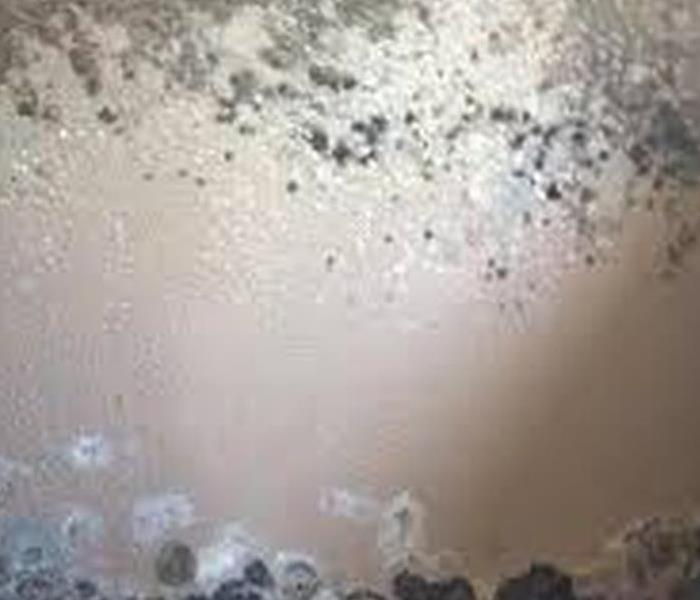 How Fast Will Mold Appear After Water Damage to Your Southern McHenry County Home?
How Fast Will Mold Appear After Water Damage to Your Southern McHenry County Home?
While water damage to your home is bad enough, there could be more secondary damages just waiting to happen if you do not get rid of the water and moisture in time. It takes just a little water for mold to start growing, so when your home has a water damage from a flood, broken pipe or faulty sump pump; there are a lot of places that mold can grow rapidly. So how fast does mold start to appear after water damage to your home?
It Depends.
There’s really no clear answer to how rapidly mold can appear after there has been water damage. If you ask mold remediation experts, you will most often hear 24-48 hours. Many water damage and mold remediation companies have observed this first hand going to homes that have suffered from water damage. On the other hand, these same experts have seen homes that have experienced water damage and have found no mold.
It gets even more confusing when you look at research that scientists have performed to determine the growth of mold. In a 2006 article in the Journal of Occupational and Environmental Hygiene titled “Controlled Study of Mold Growth and Cleaning Procedure on Treated and Untreated Wet Gypsum Wallboard in an Indoor Environment”, researchers took drywall and immersed the bottom inch in water. The researchers inspected on daily basis the drywall pieces over a period of 8 weeks for mold growth. Some of the drywall was treated with primer paint while others were left untreated and bare.
Surprisingly, the researchers didn’t discover any sign of mold growth until 2 weeks into the testing. This is obviously goes beyond the typical 24-48 hour window that is typically repeated and many times observed out in affected structures. These results only tested drywall and in one environment. The results have obviously differed in affected homes that have experienced water damage and visible mold growth. So what is different from these situations? To answer that, we have to understand how mold grows in the first place.
Mold: How Does It Grow or Happen?
Mold is microscopic in size and doesn’t really become apparent until it has grown or colonized. Mold is spread by mold spores which are carried by wind currents and are present in the air outside.. While there are more mold spores present in the air outside, mold spores also exist in our homes but at lower levels. Once mold spores are introduced to the right amount of moisture, humidity, temperature and food source, they begin to grow in our homes. If left untreated, the mold can quickly grow out of control.
So what is a food source for mold? Mold needs a dead organic substance to feed off of and grow. If you look around your home, it is full of dead organic materials like wood, fabrics, drywall, insulation, leather, dirt and dust. With the right conditions like a flooded basement or burst pipe, mold can multiple quickly. So how do you stop mold? Is there anything to prevent it?
Stop Growth of Mold and Damage Before It Begins
The key to stopping mold growth before it begins is timing. If your home should suffer water damage, call the water damage cleanup and restoration professionals at SERVPRO of Southern McHenry County. They will remove all the water and treat any water damaged parts of your home before mold can take hold. If mold has started to appear, they can also remediate the mold as well. While you can’t remove the food source normally, you can take away the water and the moisture thus stopping mold from growing or happening.
Contact SERVPRO of Southern McHenry County today for water damage cleanup & restoration, as well as, mold remediation.
Source: Journal of Occupational and Environmental Hygiene
Does Homeowners Insurance Cover Mold Removal?
2/28/2019 (Permalink)
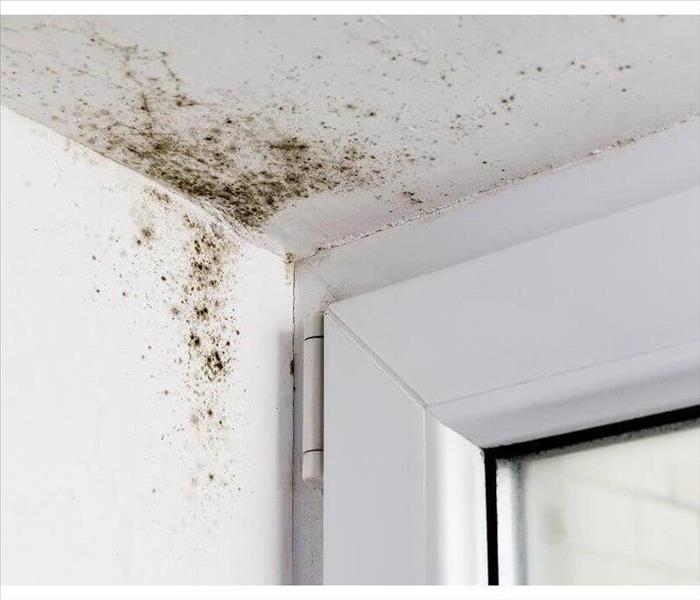 Visible Mold By Window
Visible Mold By Window
Don't be caught off guard after you already have a mold problem. Coverage varies from policy to policy, so read your policy carefully and if you have any questions, call your insurance agent. Some policies contain exclusions, stating they do not cover mold removal and others cover mold removal under certain circumstances. They may also cover the removal but not the testing itself.
If you think you might have a mold problem, call SERVPRO of Southern McHenry County. A professional trained in mold remediation will examine the structure for any visible signs of mold. If mold is found, you will be asked to approve and sign a work authorization form prior to any mold cleanup or related work being performed. The technician may also recommend you leave the affected area while the mold cleanup and associated containment process is being safely completed.
If a visual inspection does not reveal mold and you feel that you may still have a mold issue, we can recommend an Indoor Air Quality/Environmental Professional with specialized equipment to access the situation.
"Remember, no mold is good mold!"
If you suspect mold contamination in your home or business contact SERVPRO of Southern McHenry County today at 847-516-1600.
Local McHenry County Home Has Mold Invasion
8/5/2018 (Permalink)
 Mold, Mildew, and Mushrooms Are No Match For The Trained Professionals
Mold, Mildew, and Mushrooms Are No Match For The Trained Professionals
Local McHenry County Home Has Mold Invasion
This country home was broken into and vandalized. Intruders took what they wanted, and then left the water running when they left. Damage to the home included a flooded kitchen and basement. The end result was extensive mold throughout the entire basement and behind the walls of the kitchen cabinets. The flooring in the basement had mushrooms growing on area rugs.
Take Precautions
Mold is more likely to spread when an environment has been subject to moisture for a long period of time.
Four Things Are Needed For Mold Too Become A Problem
-Organic Materials (wood, paper, drywall, insulation)
-Temperature (60* and above)
-Humidity (70% or higher)
-Time (as little as 48 hours)
Our trained professionals will examine your structure, and if they find mold you will be asked to approve and sign work authorization forms prior to any mold remediation being performed.
If You Think You Might Have Mold, Call Us Today 847-516-1600.
5 Principles of Mold Remediation
6/13/2018 (Permalink)
 Mold in a Home
Mold in a Home
SERVPRO of Southern McHenry County is certified by the Institute of Inspection Cleaning and Restoration Certification (IICRC) for water, and fire restoration as well as microbial remediation. The IICRC outlines five major principles of mold remediation.
- Make sure safety and health precautions are taken by cleanup professionals and occupants. Mold-contaminated buildings can be associated with a number of health problems. Anyone involved in the mold remediation process must be protected from exposure through a combination of practices and controls.
- A post-cleanup assessment by an independent environmental expert. An effective mold remediation cannot be developed without first determining the extent of the contamination to be removed. To ensure that remediation work is being properly performed, it is highly recommended that appropriate documentation of the remediation process be kept by project management
- Control of mold before it spreads further. Eliminating mold at the source of contamination is essential. Once mold spores spread through the air, it will be much more difficult to capture.
- Oversee the proper physical removal of the mold. The mold must be physically removed from the structure. Attempts to isolate mold or remove signs of mold on the surface are not adequate. Note that bleach alone cannot kill mold.
- Ensure that moisture is controlled to limit future contamination or recontamination. Mold growth is virtually inevitable if moisture is not controlled. Moisture problems must be identified, located and corrected or controlled as soon as possible.
Application of these principles may involve multiple disciplines and professionals from a wide range of restoration and indoor environmental fields.
If you suspect mold contamination in your home or business contact SERVPRO of Southern McHenry County today at 847-516-1600.
Source: IICRC
Mold Coverage and Your Insurance Claims due to Water Loss Event
6/10/2018 (Permalink)
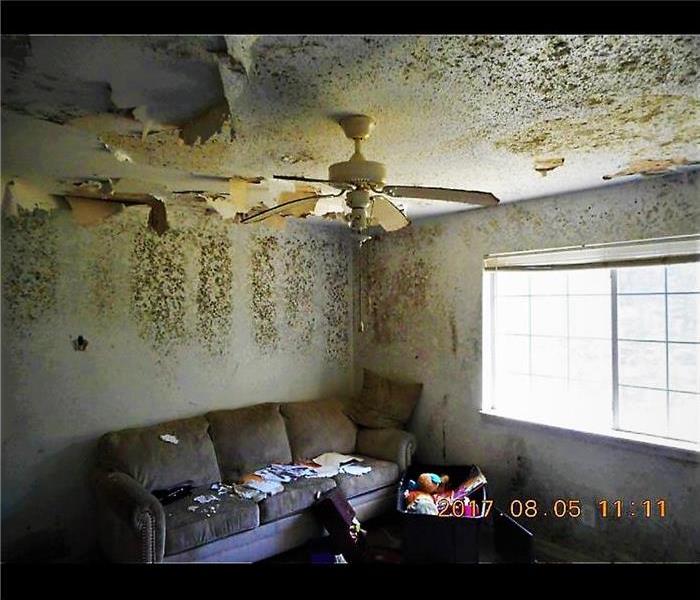 Mold Due to a Water Damage
Mold Due to a Water Damage
It has happened. There is water everywhere. Your carpet is saturated; the drywall is wet, your furniture and even some of your personal belongings. There are so many things running through your head: how am I going to get this dry; how much of this will my homeowner’s insurance policy cover; what if this water loss event leads causes mold?!
We are here to help you prepare, should a water loss event - such as a pipe burst, pipe leak, ice damming, hot water heater leak, etc. - occur in your home. Here are some tips to help you best handle the situation:
- Familiarize yourself with your declarations page. This is something that you should do, as a homeowner, once you move in to your home. This way, you know what is covered under your policy and you are not surprised when something isn’t covered. If you're not comfortable with what is or isn’t being covered, you can contact your insurance agent to make the desired adjustments.
- Document the loss as best you can.If a water loss event occurs, take date and time stamped photos. Keep record, such as call logs or copies of e-mails, of all interaction with your insurance company and any vendors you are using to help address the issue.
- If you see possible mold growth or you are getting musty-like odor, contact a mold inspection company to have a mold inspection and testing performed.If a water loss event is not properly and thoroughly dried up within 48 hours, mold can begin to grow. A mold inspection and testing by a Certified Mold Inspector will determine if "abnormal" or unhealthy mold conditions exist in the area affected by the water loss event.
- Monitor the health of those in the home.After the water loss event occurs, if any occupants of the home start experiencing adverse health reactions such as: allergy-like symptoms or respiratory issues, this may be an indication that areas were not properly dried up and mold may have started to grow. We strongly suggest having a mold inspection and testing done by a Certified Mold Inspector if any of the homes occupants are not feeling well while in the home.
If you have experienced a water loss event in your home and have concerns of mold, contact SERVPRO of Southern McHenry County at 847-516-1600. We service all of these communities in Southern McHenry County Algonquin, Cary, Crystal Lake, Fox River Grove, Huntley, Lake in the Hills, Trout Valley, Marengo, Village of Lakewood, Village of Oakwood Hills, Woodstock and Union.
Top Hidden Places that Mold May Grow In Your Southern McHenry County Home
5/31/2018 (Permalink)
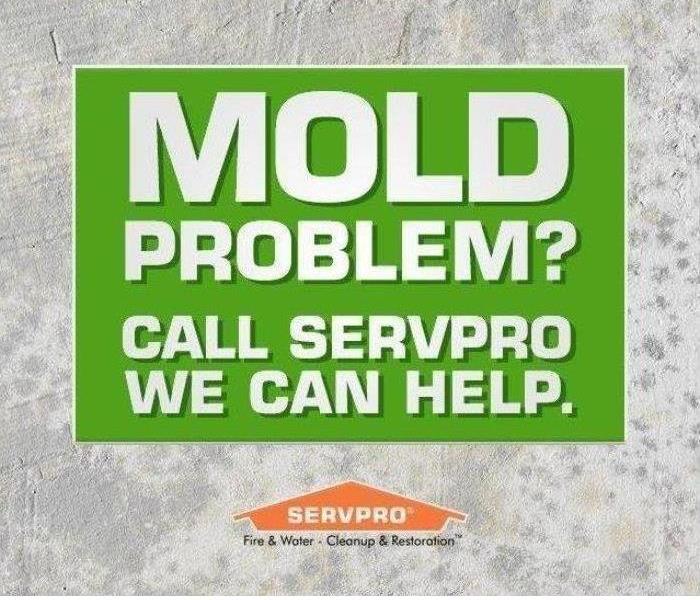 Call SERVPRO
Call SERVPRO
While there are common places where most people find mold, like around showers and tubs, there are many places in a home or business where mold be hidden. It’s these hidden areas that can lead to further damage from mold which is why it’s important to check them on a regular basis for any signs of moisture or condensation. In no particular order, here are the top places where mold can grow in a home:
- Crawl Spaces
Most homeowners never look into their crawl spaces but they might want to. Crawl spaces can easily collect moisture from water seeping through the foundation to moisture rising from the ground. A crawl space should have a vapor barrier on the ground to keep moisture from rising up. A crawl space also need adequate ventilation to allow any moisture that may collect to flow out. Failure to keep the moisture out from your crawl space can result in mold growth on the exposed framing of your home. The mold can eventually lead to excessive damage to all wood surfaces and make its way into the home.
- Basements
Basements are similar to crawl spaces but the fact that they are open and exposed to the rest of the house, can result in mold spreading quickly throughout your home via the air ducts and open doors. If your basement smells musty, then you either have mold growth already happening or the high possibility of it occurring. Due to the fact that many basements are furnished and carpeted, there are more areas in a basement that are perceptible to mold growth when compared to a crawl space.
- Bathrooms
A good ventilation fan is important in a bathroom not for the odor issues but the moisture issues. This is especially true with bathrooms where there are showers in them. While everybody loves a hot shower, a hot shower also creates a large amount of moisture that can lead to mold growth. Another area where mold may grow is behind toilets and under sinks with cabinets. Moisture can condensate on the toilet tank and wall causing mold to form on the wall.
- Under the Refrigerator
Some refrigerators have drip pans where water can collect. If dust or debris get into the drip pan, mold can start to grow. Water can also leak from the water line or drip from the cooling coils. It’s a good idea to check every few months as well as keep it clean by sweeping and vacuuming on a regular basis.
- Around the Washing Machine
The washing machine and the dryer are both susceptible to mold growth. If the dryer vent hose does not properly vent out the steam from the drying clothes, it can accumulate in the hose or around the back of the dryer causing mold to grow. Washing machines can also leak and drip down under the machine where dust can gather creating the perfect home for mold growth. Just like the refrigerator, it’s important to keep the areas clean and check underneath them often.
Top Ways to Reduce Mold Growth in Your Home
So now that you know where mold growth can happen, how can you reduce the likelihood of mold growing in your home? As stated above, it’s important to keep your home clean of dust by sweeping and vacuuming on a regular basis. While dust doesn’t necessarily cause mold to grow, dust along with moisture can.
The most important thing to reduce mold growth from happening in your home is to control and eliminate any moisture problems in your home. Check for leaks and condensation problems around sinks, appliances, and air conditioning units. If you have a musty basement, ensure that your sump pump is operating properly. You may also want to consider a dehumidifier to reduce the moisture in the air. If you have water that is seeping in from the basement walls or crawl space foundation, you’ll want to look at the drainage around your home.
Mold Remediation in Southern McHenry County
If you should experience mold growth and mold damage to your Southern McHenry County-area home or business, call the mold remediation professionals at SERVPRO of Southern McHenry County at 847-516-1600. The professionals at SERVPRO of Southern McHenry County have the specialized equipment, professional training, and certifications to quickly treat and remediate mold in your home or business.
Mold in an apartment
5/13/2018 (Permalink)
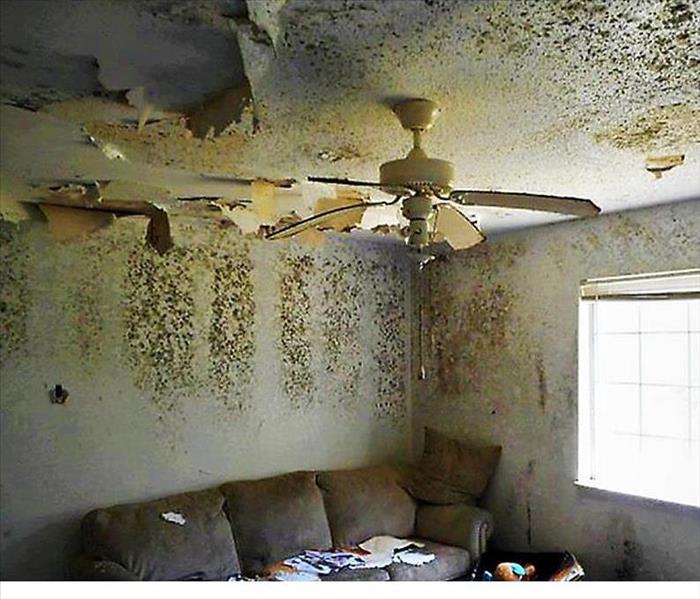 The apartment was sure there was a smell coming from a building, I guess they found it.
The apartment was sure there was a smell coming from a building, I guess they found it.
No two mold jobs are alike, no two Fire jobs are alike, no two water jobs are alike, neither are forensic, biohazards, or hoarding cleanup jobs none are just the same as the one before it. Before shows like A&E "Hoarders" or "Buried Alive", hoarding is the relatively unknown mental illness. Reality TV shows the worst-of-the-worst of these situations. TV blows things out of proportion. They want all the eye's on their show and don't want you to look away for even an instant. They don't you to even look down and eat your cereal, eyes need to be on them nowhere else.
So really how accurate are all these different shows? Most will agree to watch a tv show documenting a crew attempt to clean out a disaster scenario is not an accurate depiction of what truly goes into jobs such as these. Hoards come in all shapes and sizes, involving many different types of items from trash to treasures, like rare books and other contents.
You can find a hoarder in any place. From the cheapest apartments in town to the most expensive neighborhoods. Although not all hoards have been there before or been growing for years.
Damp Places Loves Mold
2/15/2018 (Permalink)
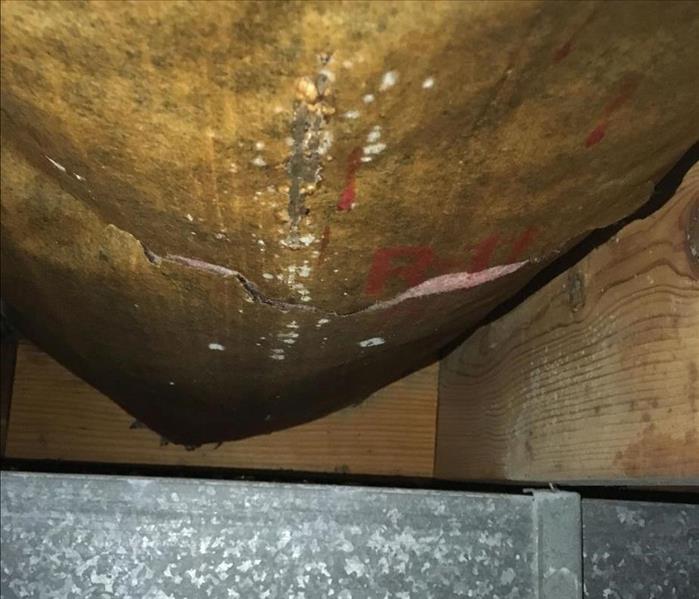 Mold in a Damp Crawlspace
Mold in a Damp Crawlspace
What Does Mold Need to Grow?
According to Michael Pugliese, author of The Homeowner’s Guide to Mold, there are three main necessities that mold spores need to grow and thrive:
Mold spores need moist or damp areas to grow and reproduce. Watch for flooding, leaky pipes or windows, etc. Also excess moisture in the bathrooms, kitchens, and laundry rooms are prime areas for mold growth.
Mold spores need food – in the literal sense as well as other materials (i.e. cotton, leather, wood, paper products and others). The most dangerous materials mold loves to grow on, are porous materials (beds, couches etc.). It’s often impossible to remove mold growth from these items.
Mold spores thrive in temperatures 32 and 120 degrees Fahrenheit. Temperatures from about 70 – 90 degrees are the most conducive for mold growth. Chances of mold growth are heightened greatly between those temperatures. You may be wondering why mold can grow in your freezer. Mold doesn’t die when temperatures drop below 32 degrees, they lay dormant until temperatures raise, or they are set out to warm up.
Favorable Conditions for Mold
Michael Pugliese, author of the same book previously mentioned, also offers 5 tips describing favorable or unfavorable conditions for mold growth:
- A relative Humidity of roughly 50% or higher
A good preventative measure would be to purchase a hygrometer to measure humidity levels in your home.
Avoid developing piles of rags, clothing or other mold food sources.
This explains why overly “tight” homes designed for energy efficiency can have mold problems.
Unfavorable Conditions for Mold
Good circulation throughout the home is important to eliminate dampness or potential moisture; especially in attics, basements, crawlspaces, laundry rooms.
Make sure to keep your home’s relative humidity down below 50%.
-Source: Mold Blogger
Classes of Mold
9/12/2017 (Permalink)
Like we always say, mold is everywhere and not all molds are harmful to us! Molds are often found in wet, damp places and can vary in color and smell. Mold is put into different categories based on their hazard:
Hazard Class C:
While this group of molds are not health hazards – they can cause structural damages, and are recommended to be removed.
Hazard Class B:
These are molds that if endured over long periods of time can cause allergic reactions
Hazard Class A:
These are the molds we want to identify and remove immediately! These molds create toxins and if not handle correctly the air quality of a structure with steadily decline.
If you feel like your home or business might be affected by mold.
Call SERVPRO at 847-516-1600. While we cannot determine what type of mold it may be – we can remediate it with no worry!
Source:
https://www.moldbacteria.com/mold/common-building-molds-their-hazard-classes.html
Mold Coverage and Your Insurance Claims due to Water Loss Event
9/11/2017 (Permalink)
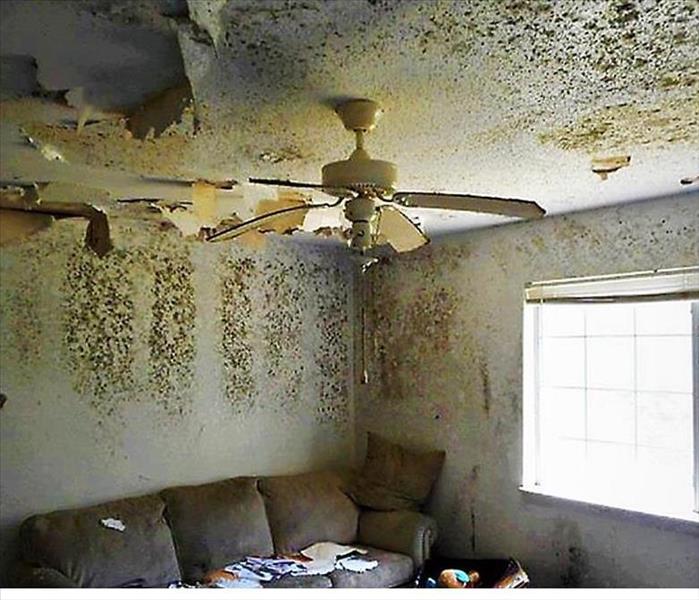 Mold Due to a Water Damage
Mold Due to a Water Damage
It has happened. There is water everywhere. Your carpet is saturated; the drywall is wet, your furniture and even some of your personal belongings. There are so many things running through your head: how am I going to get this dry; how much of this will my homeowner’s insurance policy cover; what if this water loss event leads causes mold?!
We are here to help you prepare, should a water loss event - such as a pipe burst, pipe leak, ice damming, hot water heater leak, etc. - occur in your home. Here are some tips to help you best handle the situation:
- Familiarize yourself with your declarations page. This is something that you should do, as a homeowner, once you move in to your home. This way, you know what is covered under your policy and you are not surprised when something isn’t covered. If you're not comfortable with what is or isn’t being covered, you can contact your insurance agent to make the desired adjustments.
- Document the loss as best you can.If a water loss event occurs, take date and time stamped photos. Keep record, such as call logs or copies of e-mails, of all interaction with your insurance company and any vendors you are using to help address the issue.
- If you see possible mold growth or you are getting musty-like odor, contact a mold inspection company to have a mold inspection and testing performed.If a water loss event is not properly and thoroughly dried up within 48 hours, mold can begin to grow. A mold inspection and testing by a Certified Mold Inspector will determine if "abnormal" or unhealthy mold conditions exist in the area affected by the water loss event.
- Monitor the health of those in the home.After the water loss event occurs, if any occupants of the home start experiencing adverse health reactions such as: allergy-like symptoms or respiratory issues, this may be an indication that areas were not properly dried up and mold may have started to grow. We strongly suggest having a mold inspection and testing done by a Certified Mold Inspector if any of the homes occupants are not feeling well while in the home.
If you have experienced a water loss event in your home and have concerns of mold, contact SERVPRO of Southern McHenry County at 847-516-1600. We service all of these communities in Southern McHenry County Algonquin, Cary, Crystal Lake, Fox River Grove, Huntley, Lake in the Hills, Trout Valley, Marengo, Village of Lakewood, Village of Oakwood Hills, Woodstock and Union.
Concerns with Mold in your Southern McHenry County home?
8/23/2017 (Permalink)
 Intrusion of water into your home can result in mold growth
Intrusion of water into your home can result in mold growth
From The Ordinary....
Fungi and mold naturally occur in our environment. In fact, over 100,000 kinds of fungi have been identified.
Fungi produce some very useful results. Yeast is a type of fungi used in preparing breads, baked goods and other food products, including some alcoholic beverages. The unique flavor of blue cheese is a result of mold. An edible mushroom is simply a type of fungi, and lifesaving penicillin is a product of mold.
Even though some forms of mold can add value to our lives, other forms can be harmful. Excessive amounts of mold, different types of mold, and/or exposure to molds may present health concerns for some people.
To The Unhealthy...
Intrusion of water into your Southen McHenry County home can result in mold growth. Water intrusions can be a result of storm damage, plumbing failures, long-standing leaks and poor humidity control. When these intrusions are not addressed right away, the resulting damage can present increased risk of harmful mold growth. Some amount of mold spores are normally present in most environments. If the humidity and moisture levels in a water-damaged environment are not promptly returned to normal, mold spores may grow and multiply. Organic materials found inside a building, such as wood, paper, drywall and insulation, provide food sources for mold to flourish. Excessive mold growth can lead to indoor environmental conditions that pose a health threat.
Take Precautions
The Professionals at SERVPRO of Southern McHenry County handle water damages every day and know prompt action is required to prevent mold growth. Mold is more likely to spread when an environment has been subject to moisture for a long period of time. If your Southern McHenry County property has sustained a recent water damage, it is vital to remove excess water and dry the structure promptly. If there is an ongoing moisture problem in the building, it is important to be alert for:
- The presence of visible mold.
- Strong musty odors which may indicate mold is present.
- Any evidence of past moisture problems that might have caused undetected mold growth.
- Excessive humidity.
Help is Here!!
If you think you might have a mold problem, the Professionals at SERVPRO of Southern McHenry County are here to make it “Like it never even happened."
Call us today at (847) 516-1600 for any Mold concerns
Mold Growing in Your AC Unit in Your Southern McHenry County Vacation Home or Home
8/22/2017 (Permalink)
 When mold strikes your home, SERVPRO strikes back.
When mold strikes your home, SERVPRO strikes back.
Does Your AC Unit Have A Musty Odor?
When you have arrived at your vacation home or home to find mold growing inside, you want to locate the source of the problem right away. Mold spreads fast and can cause detrimental health effects for you and your family, so getting rid of it as soon as possible is a must. SERVPRO, professional mold damage remediation specialists, can assist you in finding the source of the mold, and clean up all the mold, so your property is safe again. Your air conditioning unit in your Southern McHenry County vacation home or home can create mold damage, and quickly spread it throughout your property. When the AC unit is working properly, it can collect anywhere from ten to twenty gallons of water each day. Since most of it is usually tucked away out of sight, you may not realize the problem until it has accumulated into major damages. Water ideally drains off the condensation coil into a collection pan and then disposed into the sewer system. However, if the drain becomes clogged, it can overflow and lead to damaged carpeting and flooring, plus create unhealthy molds. When your condensation pump is dirty, it can create a leak. An excessive build-up of water like this leads to the growth of mildew and mold inside your AC unit, which in turn can get blown throughout the ductwork of your home. SERVPRO has the necessary equipment to clean the mold properly, including using air skippers or air whips which drive dirt, dust, mold and other debris toward collection devices which are fitted with HEPA filters. We know how to do the job safely and correctly, so you and your family are not exposed to the harmful mold spores during the process.
Locally Owned Company with National Resources
SERVPRO of Southern McHenry County understands the dangers of mold and how disconcerting it can be to discover it upon re-entering your vacation home after several months away. You came to relax, so call us at (847) 516-1600.
A Way To Help Preventing Mold!
8/6/2017 (Permalink)
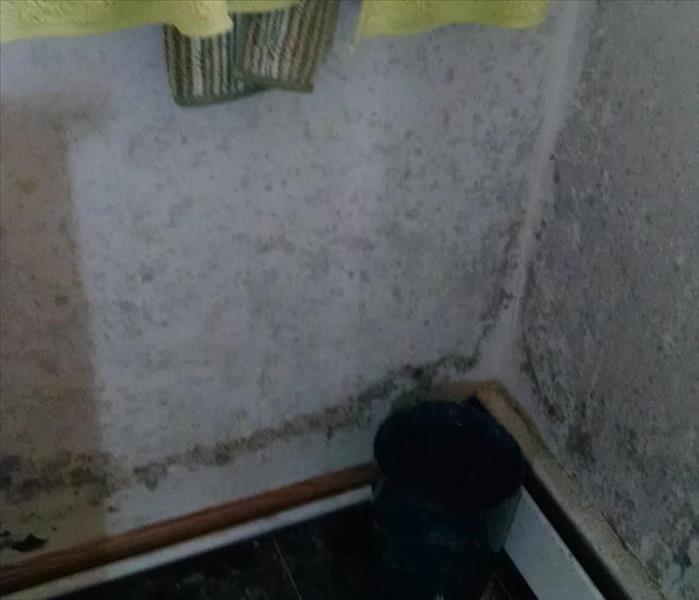 mold is a bathroom
mold is a bathroom
In today’s new home our homes made them so air tight that it causes high moisture levels and poor air quality. These causes need to control both of this problems.
Mold spores are all around us, outside and indoors. In fact, mold serves a purpose in our eco-system to consume dead organic materials.
Problems with mold arise indoors because our homes are made of dead organic materials, meaning mold can grow anywhere in your home: on carpet, clothing, food, paper, and even in places you can’t see, such as the backside of drywall, areas inside walls around leaking or condensing pipes, and above ceiling tiles.
Your senses can help you detect mold problems. A musty odor is one indication. Not only is mold smelly, but can be many different colors from black and gray to orange and green. Watermarks on the ceiling and walls are also a telltale sign.
There are three key reasons you should be concerned about preventing mold.
- Mold can be difficult and costly to remove.
- Failing to remove mold could result in dry rot and structural concerns which will impact the long term value of the property.
- Finally, and most importantly, mold can produce allergens, irritants, and mycotoxins that can compromise your health. Since mold spores are very small and can easily be inhaled into your lungs it can impact your health negatively. In fact, research shows that chronic sinusitis and asthma can be caused by mold!
The good news is mold growth can be prevented. In order for mold to grow, it requires moisture, warmth, and food. Depriving mold of any of these three items will stop it from growing.
If you have any questions or you need emergency services call us at 847-516-1600.
Mold - the Ugly, the Good and the Bad
7/30/2017 (Permalink)
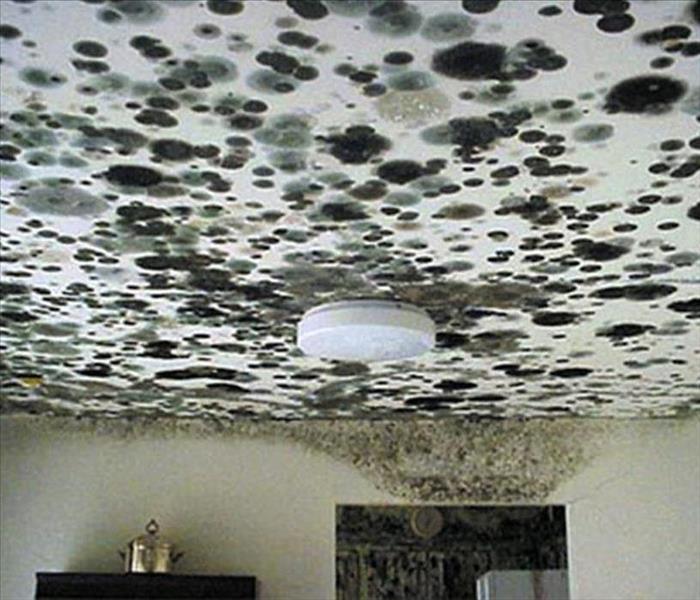 Mold in a House
Mold in a House
Mold----
the Ugly, the Good and the Bad
The Good…
Fungi and mold naturally occur in our environment. In fact, over 100,000 kinds of fungi have been identified. Fungi produces some very useful results. Yeast is a type of fungi used in preparing breads, baked goods and other food products, including some alcoholic beverages. The unique flavor of bleu cheese is a result of mold. An edible mushroom is simply a type of fungi, and lifesaving penicillin is a product of mold.
The Bad and the Ugly…
Mold exists in every household, no matter how spotless you keep it. It’s a natural part of the air in any home. Mold becomes a problem if it can grow and spread, which can lead to respiratory problems in those with suppressed immune systems and who suffer from allergies or have asthma. Severe indoor mold infestations can also affect otherwise healthy people.
Things to be aware of…
Appearance
Do you see mold?
Odor
Do you smell mold? Mold has a particular musty, earthy smell. If you smell something not quite right near an area that is prone to dampness and constant moisture, you may be smelling mold. Mold feeds on both wood and drywall, so if you smell a strong, musty odor but don’t see any discoloration, the problem may be inside of your wall. Check for leaks both inside and outside of the wall to help you track down the source of the smell.
If you suspect you have a mold problem call
SERVPRO of Southern McHenry County 847-516-1600.
A professional in mold remediation will examine your home or business and determine the next course of action needed.
A Superior Company For Mold Damage Restoration
7/28/2017 (Permalink)
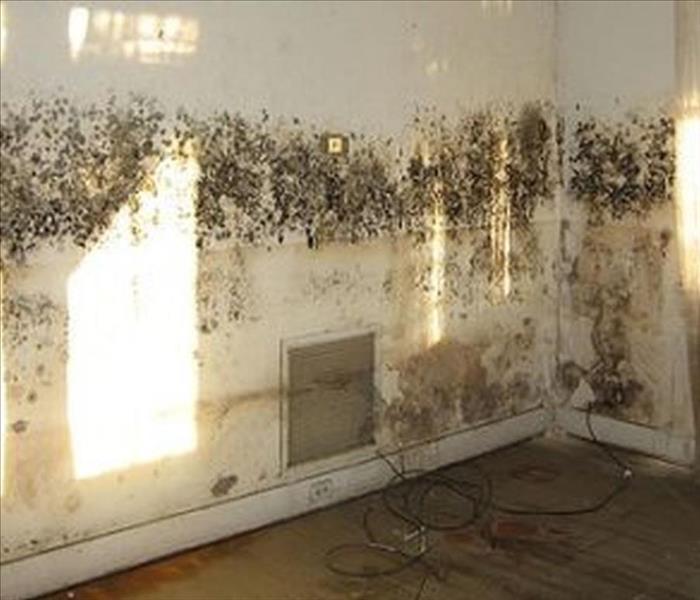 SERVPRO Says: Mold Remediation in Southern McHenry County Needs Attention
SERVPRO Says: Mold Remediation in Southern McHenry County Needs Attention
Mold Remediation by SERVPRO
Mold can grow under a multitude of conditions present in our buildings every day. Moisture, however, is the foremost factor that causes mold growth. Specific areas of Illinois are considered flood zones. Areas where the Fox River or other main river boundaries flow are known to cause flooding onto local streets, affecting businesses and homes. Flooding can affect virtually every area of a home or business. More water damage in a basement or a building's foundation causes devastating effects. If standing water of any type is not extracted quickly, mold growth and damage can be the result.
If homeowners or office managers experience any Southern McHenry County mold damage to their properties and belongings, it is most beneficial to contact SERVPRO immediately. Mold spores live and grow through moisture and high levels of humidity. If these conditions are not addressed immediately - within 48 hours, mold will continue to return. These fungi can also produce a musty odor. We specialize in water and mold mitigation and restoration. Our advanced mold remediation equipment and restoration processes help to detect and handle the source of the water problem. Each mold infestation requires a particular solution. Our highly trained professionals use an exacting system of inspection, assessment, containment, air filtration, removing mold infested materials, disinfecting, and cleaning your belongings. We can perform various types of minor and major repairs. To save our customers stress, time and costs expense, SERVPRO can handle the entire mold remediation service. We can handle the initial damage mitigation and the rebuilding, including sanitizing and deodorizing of all affected areas. Our AMRT, Applied Microbial Remediation Technicians, are IICRC certified, with advanced corporate and franchise training. We are also experienced in dealing with your insurance company, and we can assist you in these matters if applicable. We can even assist you with your paperwork for your claim. Call SERVPRO of Southern McHenry County with any questions that you may have. We are available with 24-hour emergency service – including holidays. We are locally owned and operated, which means when you call us, we can respond quickly with the help that you need.
Don't try to tackle a mold situation yourself call the pros at SERVPRO. (847) 516-1600.
Southern McHenry County Residents: Follow These Mold Safety Tips If You Suspect Mold
7/23/2017 (Permalink)
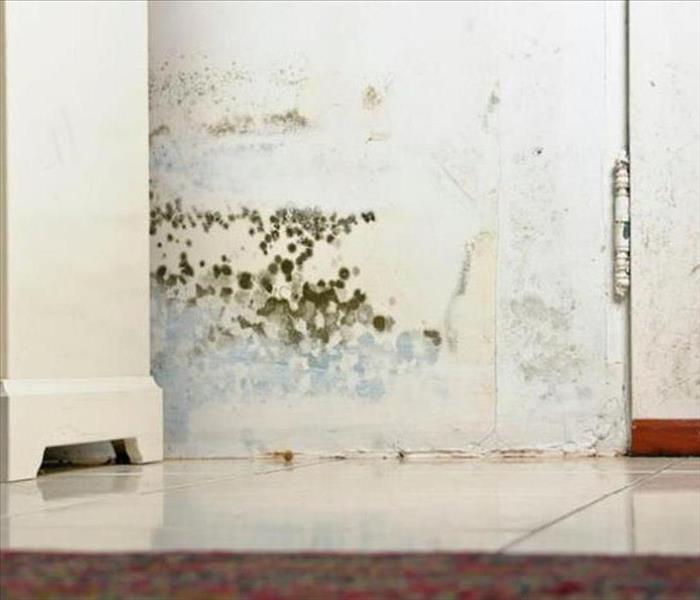 Be careful! Without proper training, you could be spreading mold throughout your home.
Be careful! Without proper training, you could be spreading mold throughout your home.
If you see visible mold, do not disturb it. You can inadvertently spread the mold infestation throughout your home. When mold is disturbed, the mold can release microscopic mold spores which become airborne and can circulate inside your home.
What to Do:
- Stay out of affected areas.
- Turn off the HVAC system and fans.
- Contact SERVPRO of Southern McHenry County for mold remediation services.
What Not to Do:
- Don’t touch or disturb the mold.
- Don’t blow air across any surfaces with visible or suspected mold growth.
- Don’t attempt to dry the area yourself.
- Don’t spray bleach or other disinfectants on the mold.
About Our Mold Remediation Services
SERVPRO of Southern McHenry County specializes in mold cleanup and restoration, in fact, it’s a cornerstone of our business. Our crews are highly trained restoration professionals that use specialized equipment and techniques to properly remediate your mold problem quickly and safely.
If You See Signs of Mold, Call Us Today – 847-516-1600.
Does Your Southern McHenry County Home Have A Mold Problem?
7/21/2016 (Permalink)
Microscopic mold spores naturally occur almost everywhere, both outdoors and indoors. This makes it impossible to remove all mold from a home or business. Therefore, mold remediation reduces the mold spore count back to its natural or baseline level. Some restoration businesses advertise “mold removal” and even guarantee to remove all mold, which is a fallacy. Consider the following mold facts:
Mold is present almost everywhere, indoors and outdoors.Mold spores are microscopic and float along in the air and may enter your home through windows, doors, or AC/heating systems or even hitch a ride indoors on your clothing or a pet.Mold spores thrive on moisture. Mold spores can quickly grow into colonies when exposed to water. These colonies may produce allergens and irritants.Before mold remediation can begin, any sources of water or moisture must be addressed. Otherwise, the mold may return.Mold often produces a strong, musty odor and can lead you to possible mold problem areas.Even higher-than-normal indoor humidity can support mold growth. Keep indoor humidity below 45 percent.If your home or business has a mold problem, we can inspect and assess your property and use our specialized training, equipment, and expertise to remediate your mold infestation.
If You See Signs of Mold, Call Us Today – (847) 516-1600
 Our SERVPRO technicians can remediate mold damage with advanced equipment and IICRC-Certified training in Southern McHenry County.
Our SERVPRO technicians can remediate mold damage with advanced equipment and IICRC-Certified training in Southern McHenry County.






 24/7 Emergency Service
24/7 Emergency Service


















